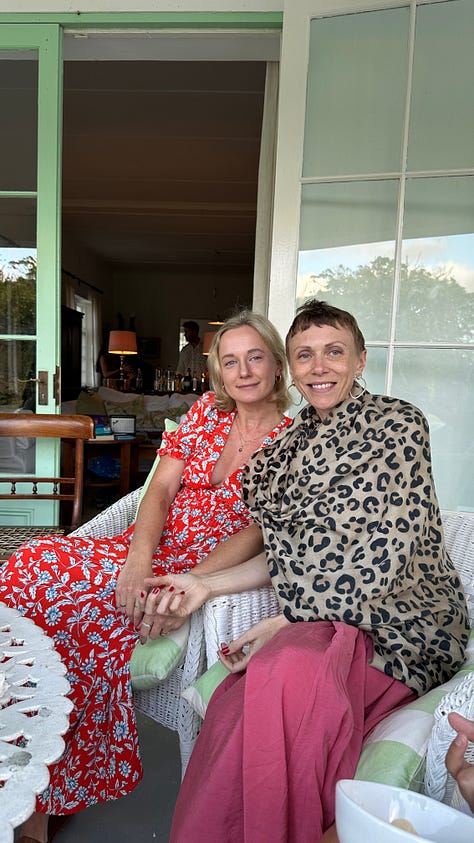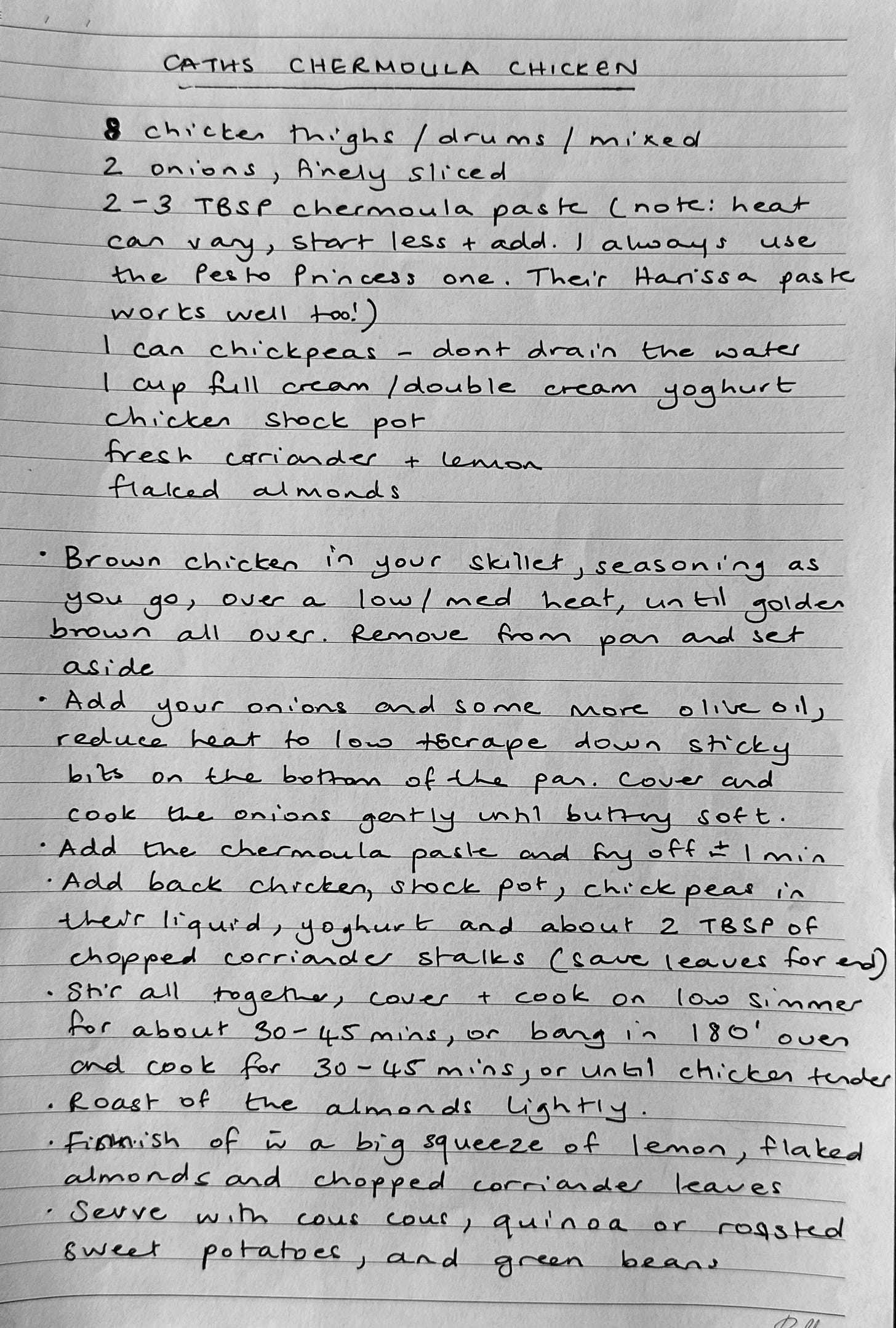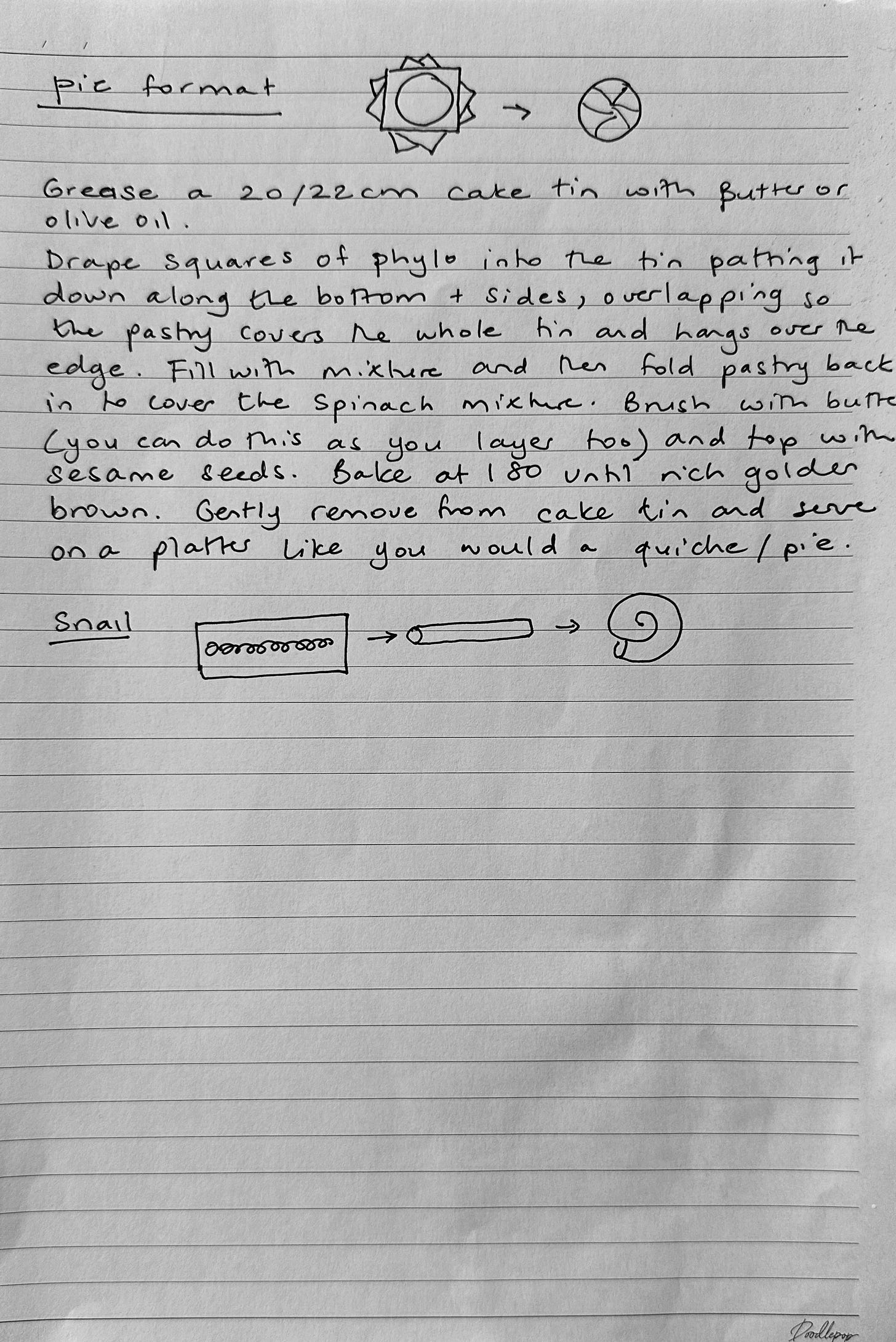Hi everyone,
I hope your weekend has been filled with good people and even better food. I’m writing this from my parents’ home in Cape Town, where I’ve been for the two weeks, as my family has gathered to celebrate the life of my sister Cath.
Cath passed away last week, after a fierce battle with cancer, so you can imagine that the past few months have been difficult for us all. If you noticed that I was a bit quiet here in January – and on my socials – now you know why. When the time came to return to London and get back on track with work and commitments, I made the decision to stay in South Africa longer. As Cath’s health declined, it became clear that time with family mattered more than anything else. She faced her battle with so much grace, faith and bravery. I would do it again in a heartbeat, to be there for her and for her three boys.
If you’re wondering why I’m choosing to share all of this here, when most of you are just here for the food, I get that, but during this time, I’ve been reflecting on the role food plays in our lives. Oftentimes, we think of it as a celebration of life – birthdays, baby showers, weddings – but before my sister passed, she reminded us how important it is during times of grief.
Ever the big sister, and nine years my senior, Cath was a guiding force throughout my life. She’s also the person I credit for introducing me to cooking and developing my love of food. While in ICU, she spent her last few days handwriting her best-loved recipes—and gathering others from family and friends, dishes she loved to cook or wanted to keep close. She wanted to compile them into a family cookbook – something I will be finishing in her honour – but the very nature of having them, especially handwritten, is a reminder that she’ll never really be gone. She’ll always be with us as we cook from these recipes, the ones she treasured and the ones she made sure to collect, whether we’re all together or just cooking for ourselves
Cancer stole her ability to eat and enjoy food in the way she once had, but it never took away her love for it. Even in her final weeks, she was still talking about meals, still finding comfort in the act of collecting recipes, still making sure that the people she loved would continue cooking and eating well
They’re a reminder that food is a celebration of life, but it’s also the support we need during grief. It’s the thing that helps keep us connected to those we lost.
There are so many moments I keep coming back to—small snapshots of time that feel even more precious now. One of Cath’s last trips to London, where we did what we always did best: planned an entire visit around food, eating our way through the city, one restaurant at a time. Our last Christmas together, the one we spent three months planning—the menu debated down to the finest detail, because that’s just who we were and deep down we knew it may be her last. And our last outing to her favorite tidal pool, a place she loved. She took a photo of me in the beach hut that day. At the time, it was just another picture. Now, I know it’s one I’ll treasure forever.
In the middle of all this loss, there’s also something new. Something Cath was so excited about. I’m expecting a little girl.
Cath, ever the big sister, made sure to remind me how much joy that brought her. She teased me for keeping it quiet, for planning to dress her niece entirely in neutrals, and spent her last weeks buying gorgeous little outfits, sending me messages about motherhood, and checking in on me—even when she was struggling herself. That was Cath. No matter what she was going through, she always found a way to show up for the people she loved.
It makes these recipes feel even more significant. They’re not just a way to remember her, but a way to pass her love forward. One day, I’ll cook them for my daughter, tell her about the aunt who couldn’t wait to meet her, and keep Cath’s presence alive in the best way I know how—through food
So, in honour of Cath—and to give myself some space to focus on family—the next two editions will be dedicated to her favourite recipes.
First up, her chermoula chicken and spanakopita. I’ve chosen these two because they’re the ones I think best sum Cath up. The Chermoula chicken is one of those dishes you wished you’d thought of because it’s just so simple. It’s a one-pot wonder, with minimal prep and hands-on time, and something I make at home all the time. You don’t need to make your chermoula paste, and I don’t because I always listened to my big sister, so just find one with the right balance of flavour and heat. Waitrose stocks chermoula in the UK, but if you can’t find it, harissa paste makes a great alternative. While the flavor profile is different—harissa is spicier and more chili-forward—you can balance it out by adding a little extra lemon juice and chopped fresh parsley and coriander to brighten it up. Essentially, you brown off your choice of chicken pieces, remove them, add some sliced onions, cook them off before adding the paste. Then, add some stock, a bit of yoghurt, coriander stems and, finally, the chicken pieces, before letting everything gently cook for 30 - 45 mins.
The second recipe is for spanakopita, which might be a labour of love, but is also a great way of using bits of herbs and greens you’ve got lurking in the fridge. Cath really isn’t precious with this one, but what makes this so special is her technique for folding it into one large pie, should you want to serve this for dinner instead of as individual triangles.
Before I go, I just want to say thank you. Having this community and the support you’ve shown has meant more than I can put into words. Cath was always proud of the work I do, and I know she’d love that I’m sharing these recipes with you. I hope you cook them for someone you love
Happy Cooking x



Cath’s Chermoula Chicken
Serves: 4-6
Time: 10 mins prep, 45 mins cooking
Ingredients
8 chicken thighs or drumsticks (or a mix)
2 onions, finely sliced
2–3 tbsp chermoula paste (Note: Heat can vary, start with less and add more. Harissa paste works well too!)
1 can chickpeas (do not drain)
1 cup full-cream yoghurt
1 Tbsp chicken stock concentrate/ stock cube
Fresh coriander
Flaked almonds
Lemon
Method
Brown the chicken in a large skillet over low-medium heat, seasoning as you go, until golden all over. Remove from the pan and set aside.
Add sliced onions and a little more olive oil, reducing the heat to low. Scrape down any sticky bits from the bottom of the pan. Cover and cook the onions gently until soft and buttery.
Stir in the chermoula paste and fry for 1 minute.
Return the chicken to the pan, along with the stock pot, chickpeas (with liquid), yoghurt, and 2 tbsp of chopped coriander stalks (save the leaves for later).
Stir everything together, cover, and simmer on low for 30–45 minutes or bake in a 180°C (350°F) oven for 30–45 minutes, until the chicken is tender.
Meanwhile, lightly toast the flaked almonds.
Finish with a big squeeze of lemon, the toasted almonds, and the chopped coriander leaves.
Serve with couscous, quinoa, or roasted sweet potatoes and green beans.
FAQs
What if I can’t find chermoula paste?
If you can’t find chermoula paste, harissa is a good substitute. It’s spicier and more chili-forward, so balance it out by adding extra lemon juice, fresh chopped coriander, and a little garlic. You can also make a simple homemade version by blending coriander, parsley, garlic, cumin, paprika, olive oil, and lemon juice.
Can I make this ahead of time?
Yes! This dish actually tastes better the next day as the flavors develop. Store in the fridge for up to 3 days and reheat gently on the stove or in the oven with a splash of water or stock to loosen it up.
Can I make this dairy-free?
Yes—swap the yoghurt for coconut yoghurt or leave it out entirely and add an extra squeeze of lemon at the end for brightness.
Cath’s Spanakopita
Makes: 1 large pie or multiple individual portions
Time: 20 mins prep, 45 mins baking
Ingredients
• 1 pack phyllo pastry, defrosted slowly under a damp cloth
• 800g spinach or chard (large bag)
• 2–3 leeks, finely chopped (or use onions/spring onions)
• 1 tub ricotta
• 2–3 rounds/ 300g feta
• 1 cup finely grated/microplaned parmesan
• ½ tsp nutmeg
• ½ tsp cumin
• ½ tsp cinnamon
• Zest of 1–2 lemons
• Generous seasoning (salt & pepper)
• ½ cup fresh dill (or 2 tbsp dried)
• ½ cup fresh mint leaves
Method
Gently fry the leeks in olive oil over low heat until soft and buttery (but not browned).
Remove the stalks from the spinach, then cover the leaves in a bowl with boiling water. Let soak until wilted, then plunge into ice water. Wring out the spinach like a wet cloth, then chop it finely.
Add the spinach to the leeks, along with the nutmeg, cumin, cinnamon, salt, and pepper. Fry for 1 minute to mix everything together.
In a large bowl, combine the spinach mixture, ricotta, feta (crumbled), parmesan, lemon zest, dill, and mint. Mix well and season generously.
Pie Format (Large Spanakopita)
Grease a 20–22cm cake tin with butter or olive oil. Drape squares of phyllo pastry into the tin, pressing them down along the bottom and sides, overlapping so the pastry covers the entire tin and hangs over the edges. Fill with the spinach mixture, then fold the overhanging pastry back over to cover the filling. Brush with butter as you layer, and top with sesame seeds. Bake at 180°C (350°F) until rich golden brown. Gently remove from the cake tin and serve on a plate, like a quiche or pie.
Snail Format (Rolled Spanakopita)
Lay out a rectangle of phyllo pastry. Spread a thin layer of filling along one edge, then roll it up tightly into a log. Coil the log into a snail shape. Brush with butter, sprinkle with sesame seeds, and bake at 180°C (350°F) until crisp and golden.
FAQs
Can I make this ahead?
Definitely! Assemble the spanakopita, wrap well to prevent it drying out, and store it in the fridge for up to 24 hours before baking. You can also freeze it—bake straight from frozen at 180°C (350°F), adding an extra 10–15 minutes to the cook time.
How do I stop phyllo from drying out?
Phyllo dries out quickly, so keep it covered with a damp tea towel while you work. Brush each layer with butter or olive oil to help it crisp up in the oven.
What should I serve this with?
Spanakopita is great as a standalone snack or meal, but it also pairs well with a crisp cucumber salad, a bowl of tzatziki, or a side of roasted vegetables.








